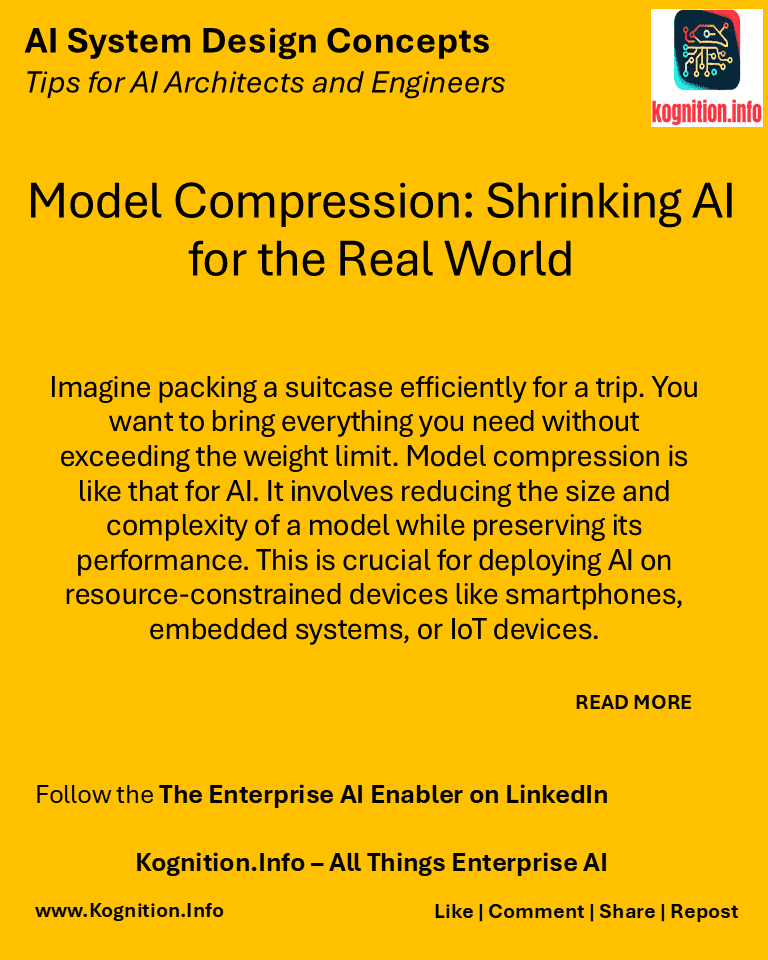
Imagine packing a suitcase efficiently for a trip. You want to bring everything you need without exceeding the weight limit. Model compression is like that for AI. It involves reducing the size and complexity of a model while preserving its performance. This is crucial for deploying AI on resource-constrained devices like smartphones, embedded systems, or IoT devices.
Use cases:
- Deploying AI on mobile devices: Enabling applications like image recognition or language translation on smartphones.
- Edge computing: Running AI models directly on edge devices like sensors or cameras for faster processing and reduced latency.
- Reducing storage and bandwidth: Minimizing the storage space and bandwidth required for storing and transmitting models.
How?
- Pruning: Remove less important connections or neurons in a neural network.
- Quantization: Reduce the precision of numerical values used to represent model parameters.
- Knowledge distillation: Train a smaller “student” model to mimic the behavior of a larger “teacher” model.
- Low-rank factorization: Approximate weight matrices with lower-rank matrices.
Benefits:
- Reduced model size: Allows for deployment on devices with limited memory and processing power.
- Faster inference: Reduces the time required to make predictions.
- Lower energy consumption: Improves energy efficiency for battery-powered devices.
Potential pitfalls:
- Performance degradation: Aggressive compression can lead to a drop in accuracy.
- Complexity: Implementing some compression techniques can be complex and require specialized tools.
- Hardware limitations: Some compression techniques may not be supported by all hardware platforms.
